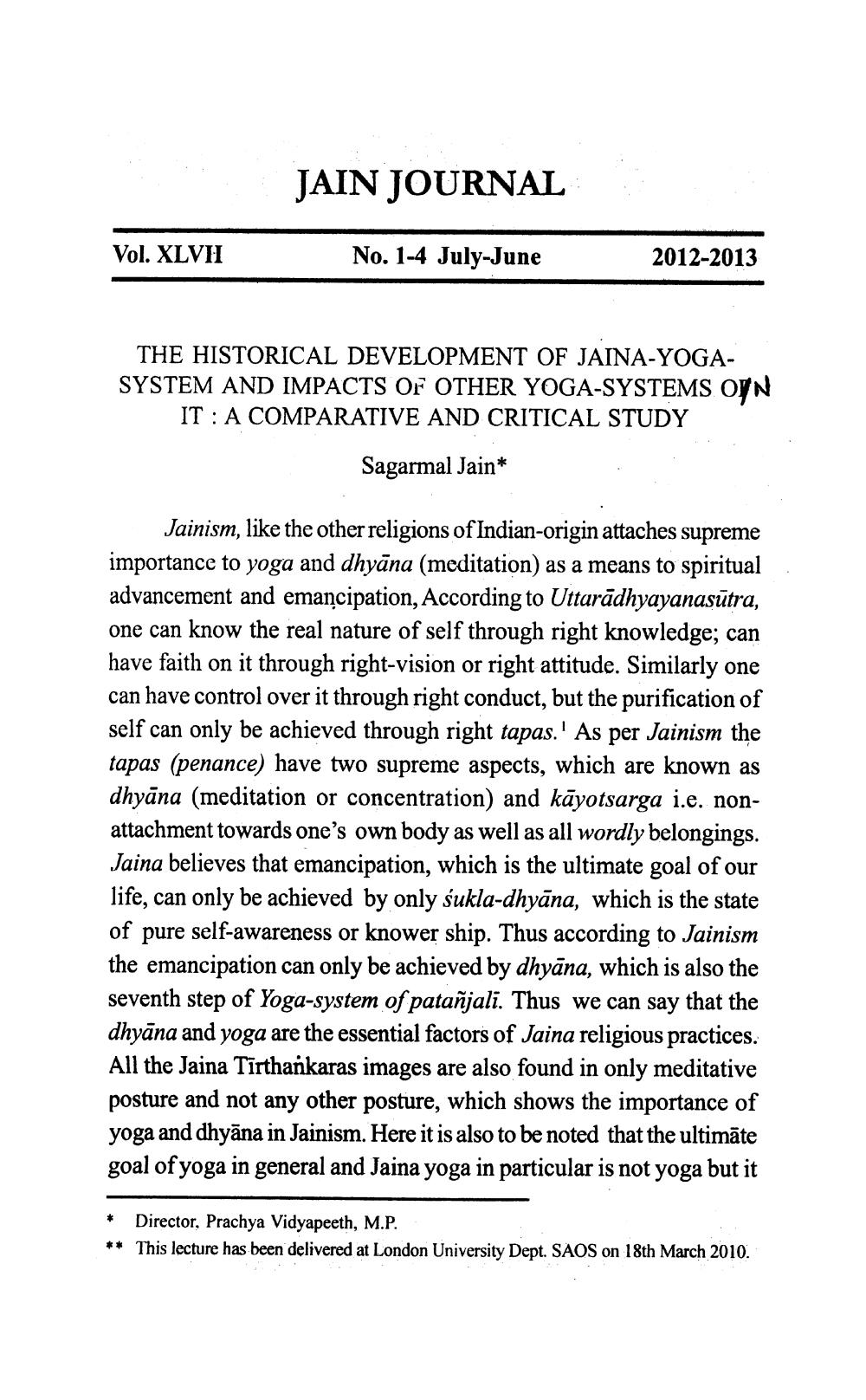Book Title: Jain Journal 2012 07 Author(s): Satyaranjan Banerjee Publisher: Jain Bhawan Publication View full book textPage 6
________________ JAIN JOURNAL Vol. XLVH No. 1-4 July-June 2012-2013 THE HISTORICAL DEVELOPMENT OF JAINA-YOGASYSTEM AND IMPACTS OF OTHER YOGA-SYSTEMS OWN IT : A COMPARATIVE AND CRITICAL STUDY Sagarmal Jain* Jainism, like the other religions of Indian-origin attaches supreme importance to yoga and dhyāna (meditation) as a means to spiritual advancement and emancipation, According to Uttarādhyayanasūtra, one can know the real nature of self through right knowledge; can have faith on it through right-vision or right attitude. Similarly one can have control over it through right conduct, but the purification of self can only be achieved through right tapas.' As per Jainism the tapas (penance) have two supreme aspects, which are known as dhyāna (meditation or concentration) and kāyotsarga i.e. nonattachment towards one's own body as well as all wordly belongings. Jaina believes that emancipation, which is the ultimate goal of our life, can only be achieved by only sukla-dhyāna, which is the state of pure self-awareness or knower ship. Thus according to Jainism the emancipation can only be achieved by dhyāna, which is also the seventh step of Yoga-system of patañjali. Thus we can say that the dhyāna and yoga are the essential factors of Jaina religious practices. All the Jaina Tīrthankaras images are also found in only meditative posture and not any other posture, which shows the importance of yoga and dhyāna in Jainism. Here it is also to be noted that the ultimāte goal of yoga in general and Jaina yoga in particular is not yoga but it Director, Prachya Vidyapeeth, M.P. ** This lecture has been delivered at London University Dept. SAOS on 18th March 2010.Page Navigation
1 ... 4 5 6 7 8 9 10 11 12 13 14 15 16 17 18 19 20 21 22 23 24 25 26 27 28 29 30 31 32 33 34 35 36 37 38 39 40 41 42 43 44 45 46 47 48 49 50 51 52 53 54 55 56 57 58
